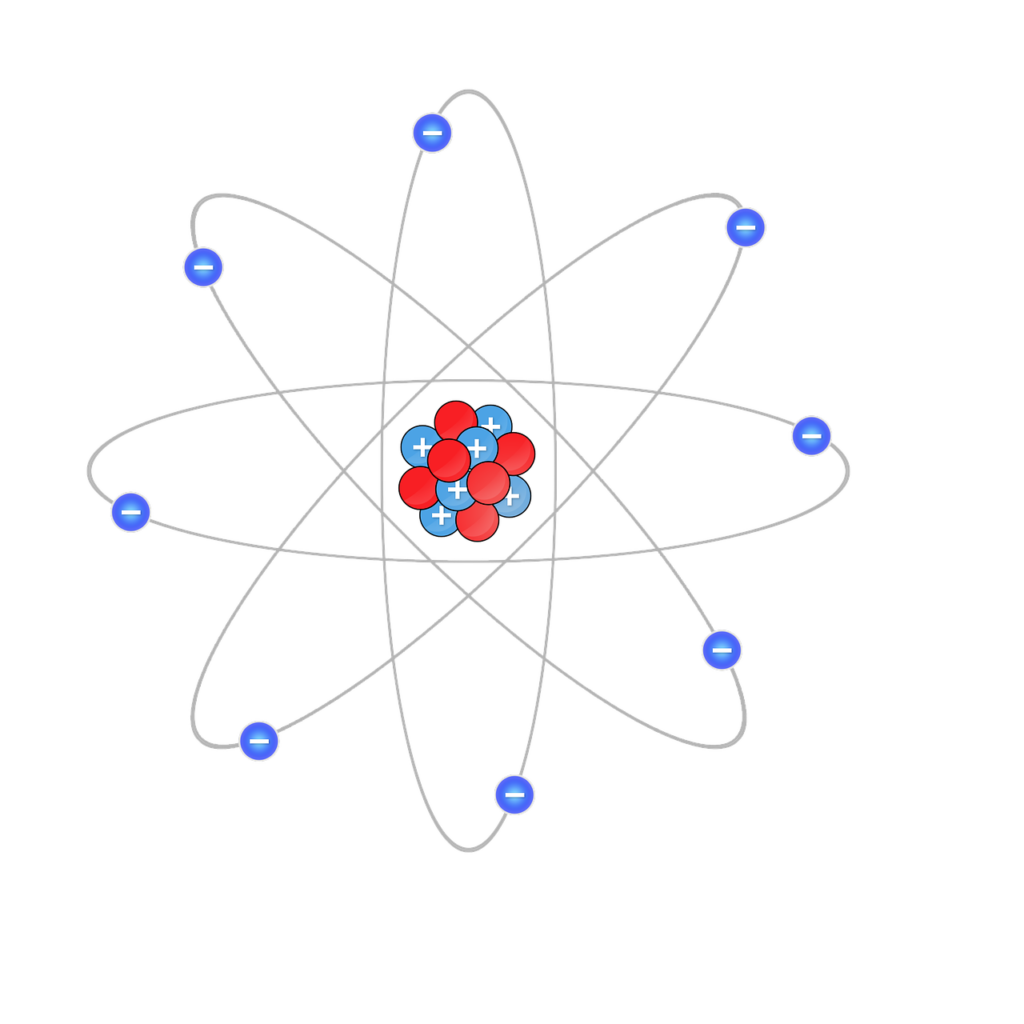Thomson model of atom, proposed by British physicist J.J. Thomson in 1904, was one of the earliest scientific models aimed at explaining atomic structure. Often called the “plum pudding model,” it describes an atom as a sphere of positive charge with negatively charged electrons embedded within it, similar to raisins in a pudding or seeds in a watermelon.
Although Thomson’s model has since been replaced by more advanced theories, it laid crucial groundwork for the study of atomic structure and the nature of electrons.

Background and Discovery :-
J.J. Thomson’s experiments with cathode rays in the late 19th century. While conducting these experiments, Thomson observed that cathode rays, when placed in an electric or magnetic field, showed properties of negatively charged particles. These particles, later called electrons, were much smaller than atoms and carried a constant negative charge.
Thomson’s work in 1897 earned him the Nobel Prize in Physics in 1906 for his discovery of the electron, marking a significant breakthrough in atomic physics. This finding led him to propose a new model to account for these subatomic particles and to explain the structure of the atom.
Structure of the Atom According to Thomson
Thomson’s model viewed the atom as a positively charged sphere with electrons embedded randomly throughout. The positive “cloud” of charge was theorised to balance the negative charges of the electrons, making the atom electrically neutral.
In this model, the positive charge was considered diffuse, spreading throughout the volume of the atom, while the electrons acted as point-like particles within this positively charged sphere.
Thomson’s atom is often compared to a “plum pudding” due to the visual analogy: the electrons are scattered throughout the atom like raisins in a plum pudding, while the positive charge makes up the surrounding “pudding.”
This analogy provides a simple way of visualising Thomson’s idea of atomic structure, which maintained the atom’s neutrality through a balanced distribution of charges.
Strengths of the Thomson Model
Thomson model was original in that it acknowledged the existence of subatomic particles, challenging the prevailing notion that atoms were indivisible. By proposing electrons as part of atomic structure, Thomson’s model laid the foundation for further exploration into the atomic components, which was revolutionary for its time.
Moreover, this model aimed to explain the electrical neutrality of atoms, suggesting that positive and negative charges within an atom naturally balanced each other.
Limitations and Legacy :-
While Thomson’s model was innovative, it had several limitations. One major drawback was its inability to account for atomic stability.
According to the model, if electrons were merely embedded in a positively charged “cloud,” there would be no mechanism to prevent them from collapsing inward. The model also failed to explain experimental observations such as spectral lines, which would later play a critical role in the development of atomic theory.
In 1909, experiments conducted by Ernest Rutherford further challenged Thomson’s model. Rutherford’s famous gold foil experiment showed that atoms consist of a dense, positively charged nucleus surrounded by electrons, leading to the nuclear model of the atom.
This experiment demonstrated that the positive charge in an atom was not spread throughout as Thomson proposed but was instead concentrated in a small central core. Consequently, the Thomson model was replaced by Rutherford’s nuclear model, and later by the Bohr model and quantum mechanics.

Key Points:-
The stability of the atom was explained as a result of the balance between the repulsive forces between the electrons their attraction towards the centre of the positive sphere.
An important feature of this model is that the mass of the atom is assumed to be uniformly distributed over the atom.
Although this model was able to explain the overall neutrality of the atom, but was not consistent with the results of later experiments.
Note :-
Thomson model of the atom represents an early attempt to explain atomic structure, acknowledging the presence of electrons within atoms and proposing a model of atomic neutrality. Though superseded by more accurate models, Thomson’s “plum pudding” model remains an important historical step in the journey to understanding atomic structure.
Its limitations ultimately encouraged further research, guiding physicists toward the discovery of the nucleus and the development of modern atomic theory.
Thomson model, also known as the “plum pudding model,” was proposed by J.J. Thomson in 1904. It describes the atom as a positively charged sphere with negatively charged electrons scattered throughout, like “raisins in a pudding.” This model aimed to explain the neutral nature of atoms by balancing positive and negative charges within.
Model earned the nickname “plum pudding model” because of the analogy it used. Thomson envisioned electrons as tiny, negatively charged “plums” embedded in a positively charged “pudding” that formed the bulk of the atom, similar to how raisins are spread within a pudding.
The Thomson model was groundbreaking because it was the first to suggest that atoms were made up of smaller particles, specifically electrons. It also addressed atomic neutrality by proposing that positive and negative charges within the atom balanced each other out, paving the way for further studies on atomic structure.
Thomson model couldn’t explain atomic stability or specific experimental observations, such as atomic spectral lines. Most importantly, it was disproved by Ernest Rutherford’s gold foil experiment in 1909, which demonstrated the existence of a dense, positively charged nucleus at the center of the atom, leading to the development of the nuclear model.
Thomson model was eventually replaced, it was essential in the development of atomic theory as it introduced the concept of electrons as fundamental components of the atom. This model encouraged further exploration of atomic structure and helped guide scientists toward the discovery of the nucleus and the modern understanding of the atom.